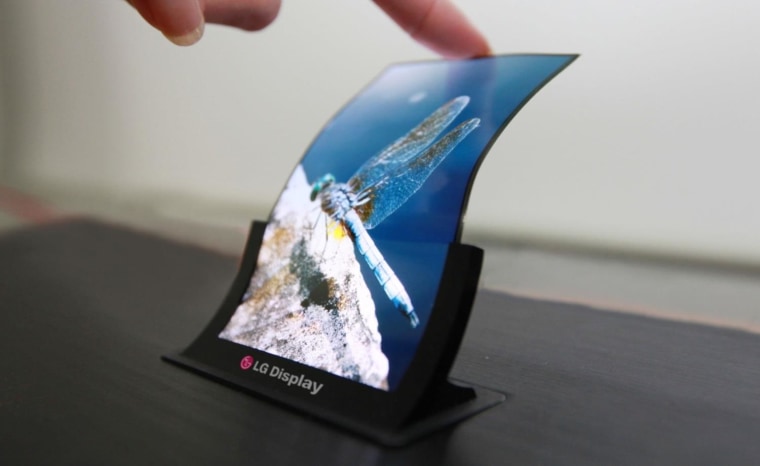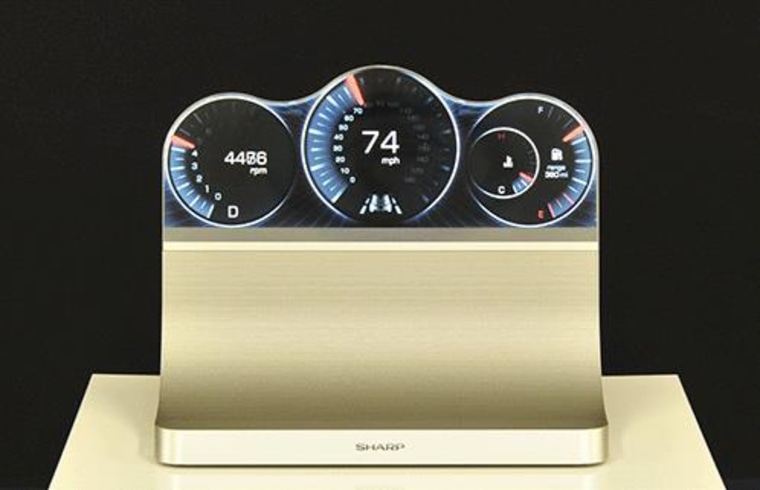Quick, think of a display screen.
Done? Now, whether you thought of a TV, a laptop or a mobile phone, you probably pictured something flat and rectangular. But that may soon change: New technologies allow for displays that are rounded, concave and perhaps even foldable.
Sign up for top Technology news delivered direct to your inbox.
The circular screen of the Moto 360 smartwatch and the Cinerama-like curve of the latest big-screen TVs are among the first to demonstrate the possibilities of new display types. But first, it might help to know: Why were our screens rectangular in the first place?
LCDs, which make up the majority of modern displays large and small, are essentially big white backlights covered up by thousands (or millions) of tiny shutters. These shutters are liquid crystals that, by applying a little voltage, can be made to admit light or block it. The bezel of the display contains extremely fine circuitry that controls the charge to each individual pixel, updating all of them many times per second to produce an image.
To keep that circuitry cheap, fast and simple for software to work with, the display has to have a regular number of rows and columns — for instance, 1,920 of one and 1,080 of the other. Hence the rectangular shape.
New display technology is loosening this last restriction, and just in time: Devices are shrinking and multiplying, and the idea of a square smart bracelet or ring with a thick bezel doesn't make much sense.
One such tech changing things is organic light-emitting diodes, usually abbreviated to OLED (or close cousin AMOLED). The advantage of these displays is that there's no big backlight required; each pixel produces its own light rather than simply letting light through. This not only makes for better contrast and color, but the built-in circuitry structure of OLED means there's no need for that thick bezel — allowing for shapes like the circular Moto 360.

Another advantage of OLED screens is that they can more easily be placed in a soft plastic substrate rather than brittle silicon. You can't quite exactly fold it up and put it in your pocket — yet — but your next wearable device doesn't need to be quite so rigid.
"For smart watches, everyone will immediately appreciate the significance and importance of a curved and/or flexible display," wrote Raymond Soneira, president of display-testing firm DisplayMate.
So if OLEDs are better, why aren't they in everything?
"They are still difficult to manufacture," explained Soneira, "but there are lots of advantages to the technology so it will eventually become mainstream — absolutely guaranteed!"
There is actually one slightly bendable smartphone out there already, the LG G Flex — but the first truly bendable display line might not be your phone, but your e-reader. E-paper screens are naturally friendly to plastic substrates, and many on the market already can do a bit of flexing. Imagine a Kindle that you open up like a paperback, and fold up so it fits in your back pocket.
Whatever comes first, it's only one slice of what could be a big pie: one estimate puts the flexible display market at nearly $4 billion by 2020.

Or perhaps LCDs will stay dominant: Sharp recently announced that it has found a way to integrate that circuitry, normally crowded at the edges of the screen, with the display itself. It essentially frees normal LCDs from the curse of rectangularity. If these "free-form" displays are as cheap and easy to make as normal ones, you'll likely see them in car dashboards, tablets and other interesting form factors soon.
According to Soneira, we'll see things change in small steps. There have already been a couple smartphones with curved screens, but "most reviewers and consumers still think they are just marketing gimmicks," he said. But a screen that wraps right around the edge of your device, he suggests, will come out soon — and something like that will sell itself.